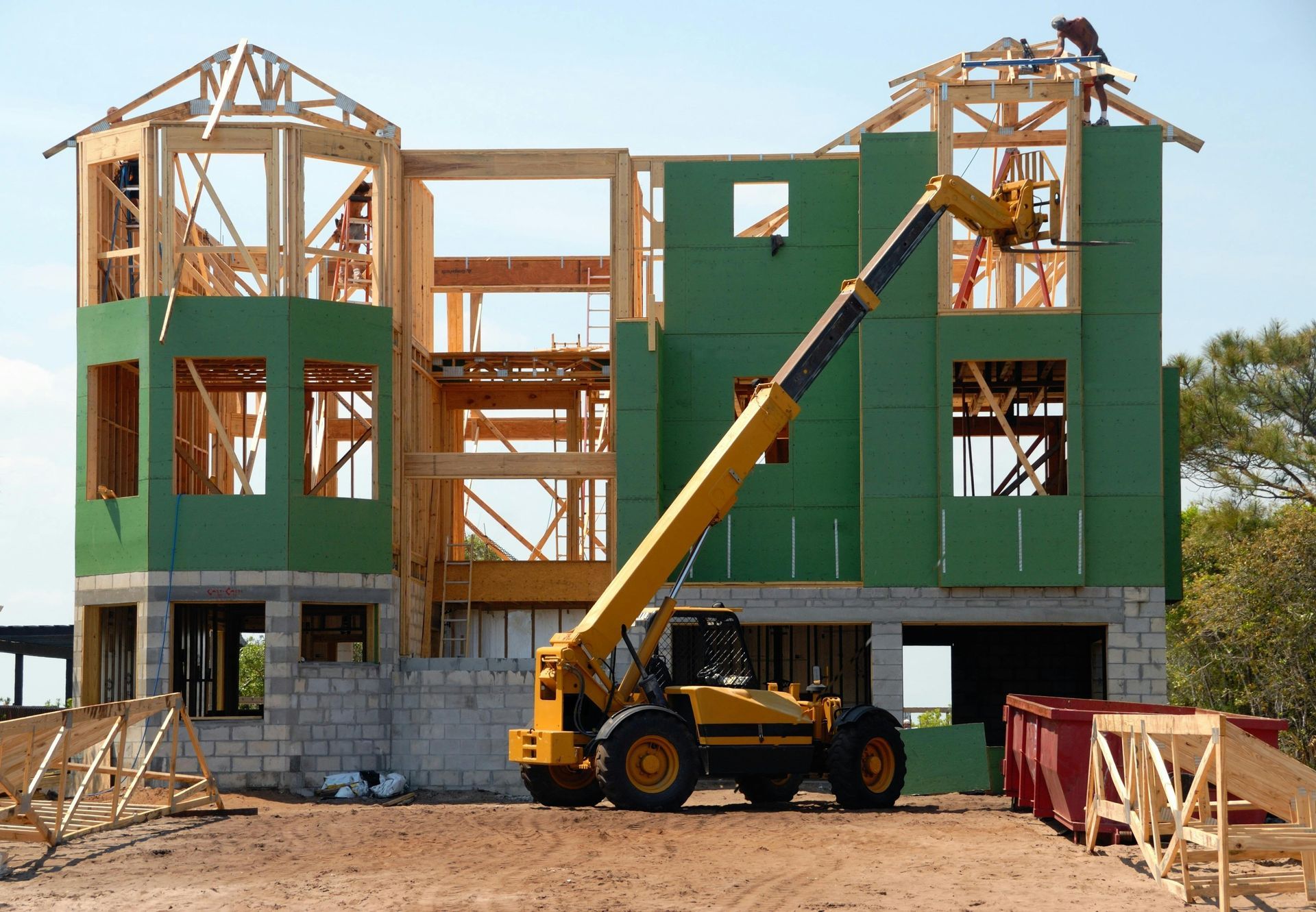Construction Timelines and Phases in Lowcountry

Construction Timelines and Phases in Lowcountry
Building a custom home in the Lowcountry of South Carolina is a big adventure. Each step of the construction process matters. Knowing the timeline and phases of the building can help you stay organized and make smart choices. This guide walks you through the key aspects of construction timelines for your new custom home.
Key takeaways
- A construction timeline is a plan that outlines each step of building a custom home.
- The phases include planning, site preparation, foundation, structure, and finishing.
- Communication with your builder is important to keep the project on track.
- Delays can happen, but you can manage them with good planning and flexibility.
- Local weather and regulations in Charleston can impact your timeline.
For more insights on the intricacies of custom home construction, you can explore comprehensive services tailored for your dream home.
Understanding construction timelines
A construction timeline is like a roadmap. It tells you what happens when and helps everyone stay on the same page. For a custom home, this timeline includes many steps from start to finish. Each phase takes a certain amount of time, and knowing what to expect makes the process smoother.
Importance of accurate timeline planning
In Charleston, having a clear timeline is very important. The weather can change quickly, and local regulations can add time to your project. Planning ahead helps avoid problems and keeps the project moving forward.
Key components of a construction timeline
A good construction timeline has several key parts:
- Planning: This is where you decide what you want in your new home.
- Site preparation: This includes clearing the land and getting it ready for construction.
- Foundation: Building a strong base is crucial for your home.
- Structure: This is the phase where the walls and roof go up.
- Finishing: This includes all the details that make your house a home.
Steps to create a construction timeline
Creating a construction timeline involves several steps:
- Define the project scope: This means knowing exactly what you want.
- Break down the project into tasks: List each task needed to complete the build.
- Estimate task durations: Figure out how long each task will take.
- Identify task dependencies: Some tasks depend on others being finished first.
- Allocate resources: Make sure you have the right people and materials for each step.
- Create the timeline: Put everything into a schedule.
- Review and adjust: Keep checking the timeline and make changes as needed.
Phase Duration (Weeks) Key Activities Notes
- Planning 2-4 Design and consultations Involves client meetings
- Site Preparation 1-3 Land clearing, grading Depends on land condition
- Foundation 2-6 Excavation, pouring concrete Weather dependent
- Structure 6-12 Framing, roofing Critical phase for timing
- Finishing 4-8 Interior work, landscaping Final touches and details
Unique considerations for Lowcountry construction timelines
Building in the Lowcountry comes with its own set of challenges and advantages. Here are some key points to keep in mind:
Weather patterns
The weather in Charleston can be unpredictable. Rain can cause delays, especially during the summer months. Knowing the typical weather patterns can help you plan better.
Local regulations
Before you start building, you must understand local building codes and permits. These rules help keep homes safe and can affect your timeline.
Environmental considerations
Charleston is known for its beautiful natural surroundings. When building, consider how your new home will fit into the landscape. This might require extra time for planning and permits.
Tourist season
Charleston is a popular tourist destination. During peak tourist seasons, finding contractors and materials might be harder. Factoring in this busy time can help you avoid delays.
Tools for construction timeline planning
There are many tools to help you create and manage your construction timeline. Here are a few to consider:
Project management software
These programs can help you keep track of tasks, deadlines, and budgets all in one place. They make it easy to see what’s next and what has been completed.
Collaborative platforms
These tools allow you to share information with your builder and team members. Keeping everyone on the same page is essential for a smooth process.
Spreadsheet software
Using a simple spreadsheet can also work. You can list tasks, durations, and who’s responsible for each task. It’s an easy way to visualize your timeline.
Benefits of Custom Home Construction Tools
- Increased Efficiency: Streamlines workflow and task management.
- Clear Communication: Enhances collaboration among team members.
- Real-time Updates: Keeps everyone informed on progress and changes.
Common challenges in construction timeline planning
Even with the best plans, challenges can arise. Here are some common issues:
Weather delays
Rain and storms can halt construction. Be prepared for weather-related delays by keeping a flexible timeline.
Resource shortages
Sometimes, materials may not be available when needed. Planning ahead and having backup options can help reduce this problem.
Scope changes
If you want to change something during the building process, it can add time. Make sure to keep communication open with your builder.
Permit delays
Getting the required permits on time is crucial. Start this process early to avoid delays.
Best practices for construction timeline management
To keep your project on track, consider these best practices:
Regular updates
Set a schedule for updates with your builder. This keeps everyone informed about progress and potential delays.
Clear communication
Make sure you and your builder are always talking. This helps to quickly address any issues that come up.
Flexibility
Be ready to adjust your timeline if needed. Sometimes, things just don’t go as planned.
Documentation
Keep all your documents organized. This includes contracts, permits, and communication.
The role of technology in construction timeline planning
Technology can make managing your construction timeline easier. Here are some ways it can help:
Building information modeling (BIM)
This tool helps visualize your home before it is built. It allows everyone to see the plan and spot potential issues early.
Artificial intelligence (AI)
AI can help predict delays. It can analyze data to give you insights on how to stay on schedule.
Internet of Things (IoT)
Smart devices can monitor your construction site. They can help track progress and alert you to any problems.
Cost control
Good technology helps keep an eye on your budget. It can alert you if costs go above what you planned.
The impact of effective timeline planning on project success
When you plan your construction timeline well, you set your project up for success. Here’s how:
Client satisfaction
A well-managed timeline can lead to happy clients. When you meet deadlines, it builds trust and confidence.
Quality improvement
Staying on schedule allows builders to focus on quality. Rushed work often results in mistakes.
Stress reduction
Knowing what to expect and when can ease worries. A clear timeline helps everyone feel more comfortable.
Timeline planning for a Charleston custom home
When building a custom home in Charleston, remember these tips:
Start with a vision
Know what you want in your new home. This makes the planning process easier.
Choose the right builder
Finding a builder who understands your vision is key. Look for someone with experience in the Lowcountry.
Stay involved
Keep communication open throughout the process. Your input is valuable at every step.
Prepare for the unexpected
Be ready for challenges. Having a flexible mindset helps you navigate the ups and downs of construction.
The future of construction timeline planning
As technology improves, so will construction timeline planning. Here’s what to expect:
Advanced tools
New software and tools will make it easier to create and manage timelines.
Better forecasting
With more data, builders can predict delays and challenges better.
Smarter construction
Using technology will lead to more efficient building processes and timelines.
The value of mastering construction timelines
Understanding and managing construction timelines can make a big difference in your new home project. Here’s why it matters:
- You stay organized: A clear timeline keeps you on track.
- You manage costs better: Knowing when things will happen helps control your budget.
- You build better relationships: Good communication fosters stronger ties with your builder.
For those seeking inspiration and examples, explore our successful home renovation projects.
Building a custom home is a big goal. Understanding construction timelines and phases helps you navigate the process with confidence. With planning and good communication, your dream home can become a reality.
In conclusion, the construction timeline is crucial in building a custom home in the Lowcountry. It helps everyone involved know what to expect and when. By being organized and working closely with your builder, you can create a beautiful home that meets your vision. Remember to stay flexible and prepared for any challenges that may come your way. Your dream home is waiting!






